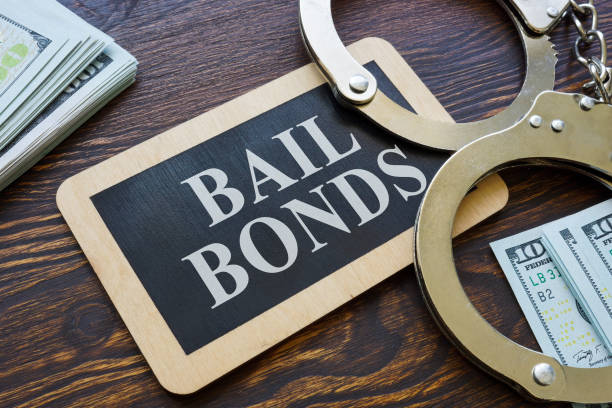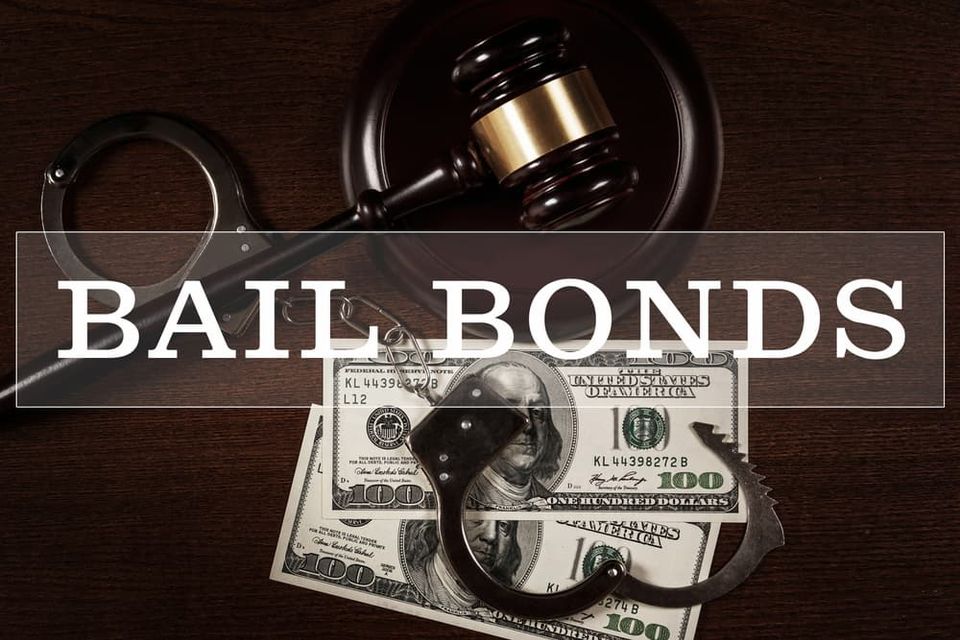Recognizing Your Legal Rights When Utilizing a Bail Bondsman
Recognizing Your Legal Rights When Utilizing a Bail Bondsman
Blog Article
Understanding the Essentials of Bail Bonds: What You Need to Know
Navigating the intricacies of bail bonds is a necessary facet of the lawful system that can substantially affect the implicated's journey through court proceedings. A bail bond works as a monetary assurance for the court, assisting in momentary launch from custody while awaiting trial. However, the intricacies of just how bail bonds run, the various kinds readily available, and the essential factors to consider in choosing a reputable bail bondsmansman can be discouraging. Comprehending these aspects is crucial, as the consequences of missteps might result in unforeseen issues that expand far past the court. What are the fundamental facets that one must realize to successfully maneuver this procedure?
What Is Bail?
Bail is an economic plan that permits an individual implicated of a crime to be launched from wardship while awaiting test. The primary function of bail is to guarantee that the offender stands for future court proceedings (Bail Bondsman). Generally established by a court, the bail amount differs depending on the nature of the criminal offense, the offender's criminal background, flight danger, and other significant elements
When bail is approved, the charged or a representative has to pay a specified sum, which may remain in money or via a bail bond. Sometimes, bail can be refuted completely, especially for serious offenses or if the suspicious positions a considerable danger to public security. The principle of bail is rooted in the anticipation of virtue, enhancing the concept that people need to not be penalized prior to a conviction.

Understanding Bail Bonds
A bail bond is an economic instrument that facilitates the release of an accused person from custody, serving as an assurance for their appearance at future court dates. This plan permits accuseds to keep their liberty while waiting for trial, decreasing the problems related to incarceration. The bail bond process generally involves a third-party company, referred to as a bondsman, who offers the required funds to the court on behalf of the charged.
Bail bonds been available in different kinds, including surety bonds, building bonds, and cash money bonds, each with distinctive needs and ramifications. Surety bonds, the most usual type, need a superior payment, usually a percent of the overall bail amount, which is non-refundable. On the other hand, a home bond involves making use of real estate as collateral, while cash bonds demand the full bail quantity to be paid upfront.
Comprehending the nuances of bail bonds is essential for offenders and their households. It is important to understand the potential monetary implications, consisting of fees and commitments to the bail bondsmansman, as well as the legal responsibilities connected to making sure court appearances. Expertise of these components help in making notified decisions throughout a difficult time.
Just How Bail Bonds Work
The process of protecting a bail bond typically involves a number of crucial steps that ensure the charged can regain their freedom while awaiting trial. At first, the specific or their depictive calls a bail bondsman, who evaluates the instance and the linked threats. The bail bondsman will certainly call for details about the accused, including the charges, the bail quantity established by the court, and any kind of pertinent individual information.
As soon as the bail bondsman accepts give the bond, the charged or their rep has to pay a non-refundable cost, generally a percent of the complete bail quantity. This charge compensates the bondsman for i thought about this tackling the economic threat of making certain the implicated appears in court. In some situations, collateral may also be called for, such as residential or commercial property or valuable properties, which functions as protection for the bond.
After any kind of security and the fee are arranged, the bondsman sends the necessary documentation to the court. Upon approval, the bail is uploaded, and the charged is launched from custody. It is important for the accused to stick to all court days and conditions, as failing to do so can cause the forfeit of the bond and prospective lawful repercussions.
Sorts Of Bail Bonds
Different sorts of bail bonds are available to match different circumstances and requirements. The most usual kind is the guaranty bond, where a bond bondsman assurances settlement of the complete bail amount to the court in exchange for a non-refundable cost, usually around 10% of the bail. This setup allows offenders to secure their launch without paying the whole bail upfront.
An additional type is the cash money bond, which requires the offender or a co-signer to pay the full bail amount in money straight to the court - Bail Bondsman. This alternative is commonly chosen for reduced bail amounts, as it makes certain the cash is returned upon the defendant's look at all court procedures
Home bonds entail using property as security. In this instance, the court places a lien on the residential property, which can be forfeited if the defendant stops working to appear.
Finally, government bail bonds are specifically created for government situations, usually involving higher amounts and added intricacies. Recognizing these numerous bail bond types is essential for accuseds and their family members in making educated choices throughout a tough time.
Choosing a Bondsman
When picking a bondsman, it is vital to take into consideration several key elements that can affect the overall experience and outcome. Evaluate the bondsman's online reputation by looking into on-line evaluations and obtaining referrals from relied on resources. A trusted bail bondsmansman will certainly have a background of professionalism and successful instances.

It is also critical to recognize the cost framework. A lot of bail bondsmensman charge a non-refundable cost, typically around 10% of the bail quantity. Watch out for any kind of surprise costs or uncommon repayment practices. Openness in rates is a trademark of a trustworthy bondsman.
Conclusion
Bail serves as an economic go to this website assurance of court look, while various kinds of bail bonds cater to different conditions. Understanding the functional devices of bail bonds and picking a respectable bail bondsman can substantially affect the general experience.
The details of how bail bonds visit this site right here operate, the numerous types offered, and the critical considerations in choosing a reputable bail bondsman can be daunting. The bail bond procedure normally entails a third-party company, known as a bail bondsman, who supplies the necessary funds to the court on behalf of the implicated.
The most typical kind is the guaranty bond, where a bond bondsman warranties repayment of the full bail amount to the court in exchange for a non-refundable charge, commonly around 10% of the bail. Bail offers as a financial assurance of court appearance, while various types of bail bonds cater to various situations. Recognizing the functional devices of bail bonds and selecting a trustworthy bail bondsman can dramatically affect the total experience.
Report this page